Black And Decker FSX1800HD Handleiding
Black And Decker
Boormachine
FSX1800HD
Bekijk gratis de handleiding van Black And Decker FSX1800HD (7 pagina’s), behorend tot de categorie Boormachine. Deze gids werd als nuttig beoordeeld door 39 mensen en kreeg gemiddeld 3.7 sterren uit 20 reviews. Heb je een vraag over Black And Decker FSX1800HD of wil je andere gebruikers van dit product iets vragen? Stel een vraag
Pagina 1/7

GENERAL SAFETY RULES - FOR ALL BATTERY
OPERATED TOOLS
WARNING! READ AND UNDERSTAND ALL INSTRUCTIONS.
Failure to follow all instructions listed below, may result in electric shock, fire and/or serious
personal injury. SAVE THESE INSTRUCTIONS
Work Area
•Keep your work area clean and well lit. Cluttered benches and dark areas invite
accidents.
• Do not operate power tools in explosive atmospheres, such as in the presence of
flammable liquids, gases, or dust. Power tools create sparks which may ignite the dust
or fumes.
• Keep bystanders, children, and visitors away while operating a power tool.
Distractions can cause you to lose control.
Electrical Safety
• Do not abuse the cord. Never use the cord to carry the tool. Keep cord away from
heat, oil, sharp edges or moving parts. Replace damaged cords immediately.
Damaged cords may create a fire.
• A battery operated tool with integral batteries or a separate battery pack must be
recharged only with the specified charger for the battery. A charger that may be
suitable for one type of battery may create a risk of fire when used with another battery.
• Use battery operated tool only with specifically designated battery pack. Use of any
other batteries may create a risk of fire.
Personal Safety
• Stay alert, watch what you are doing and use common sense when operating a
power tool. Do not use tool while tired or under the influence of drugs, alcohol, or
medication. A moment of inattention while operating power tools may result in serious
personal injury.
• Dress properly. Do not wear loose clothing or jewelry. Contain long hair. Keep your
hair, clothing , and gloves away from moving parts. Loose clothes, jewelry, or long hair
can be caught in moving parts. Air vents cover moving parts and should be avoided.
• Avoid accidental starting. Be sure switch is in the locked or off position before
inserting battery pack. Carrying tools with your finger on the switch or inserting the
battery pack into a tool with the switch on invites accidents.
• Remove adjusting keys or wrenches before turning the tool on. A wrench or a key that
is left attached to a rotating part of the tool may result in personal injury.
• Do not overreach. Keep proper footing and balance at all times. Proper footing and
balance enable better control of the tool in unexpected situations.
• Use safety equipment. Always wear eye protection. Dust mask, non-skid safety shoes,
hard hat, or hearing protection must be used for appropriate conditions.
Tool Use and Care
• Use clamps or other practical way to secure and support the workpiece to a stable
platform. Holding the work by hand or against your body is unstable and may lead to loss
of control.
• Do not force tool. Use the correct tool for your application. The correct tool will do the
job better and safer at the rate for which it is designed.
• Do not use tool if switch does not turn it on or off. A tool that cannot be controlled with
the switch is dangerous and must be repaired.
• Disconnect battery pack from tool or place the switch in the locked or off position
before making any adjustments, changing accessories, or storing the tool. Such
preventative safety measures reduce the risk of starting the tool accidentally.
• Store idle tools out of reach of children and other untrained persons. Tools are
dangerous in the hands of untrained users.
• When battery pack is not in use, keep it away from other metal objects like: paper
clips, coins, keys, nails, screws or other small metal objects that can make a
connection from one terminal to another. Shorting the battery terminals together may
cause sparks, burns, or a fire.
• Maintain tools with care. Keep cutting tools sharp and clean. Properly maintained
tools, with sharp cutting edge are less likely to bind and are easier to control.
• Check for misalignment or binding of moving parts, breakage of parts, and any
other condition that may affect the tool’s operation. If damaged, have the tool
serviced before using. Many accidents are caused by poorly maintained tools.
• Use only accessories that are recommended by the manufacturer for your model.
Accessories that may be suitable for one tool may create a risk of injury when used on
another tool.
Service
• Tool service must be performed only by qualified repair personnel. Service or
maintenance performed by unqualified personnel may result in a risk of injury.
• When servicing a tool, use only identical replacement parts. Follow instructions in
the Maintenance section of this manual. Use of unauthorized parts or failure to follow
Maintenance Instructions may create a risk of shock or injury.
Specific Safety Rules
• Hold tool by insulated gripping surfaces when performing an operation where the
cutting tool may contact hidden wiring or its own cord. Contact with a "live" wire will
also make exposed metal parts of the tool "live" and shock the operator.
• When working on a ladder or on scaffolding be sure to lay the tool down on its side
when not in use. Some tools with large battery packs will stand upright but may be easily
knocked over.
• Do not operate this tool for long periods of time. Vibration caused by the operating
action of this tool may cause permanent injury to fingers, hands, and arms. Use gloves to
provide extra cushion, take frequent rest periods, and limit daily time of use.
WARNING: Some dust created by power sanding, sawing, grinding, drilling, and
other construction activities contains chemicals known to cause cancer, birth
defects or other reproductive harm. Some examples of these chemicals are:
• lead from lead-based paints,
• crystalline silica from bricks and cement and other masonry products, and
• arsenic and chromium from chemically-treated lumber (CCA).
Your risk from these exposures varies, depending on how often you do this type of work.
To reduce your exposure to these chemicals: work in a well ventilated area, and work with
approved safety equipment, such as those dust masks that are specially designed to filter
out microscopic particles.
•Avoid prolonged contact with dust from power sanding, sawing, grinding, drilling,
and other construction activities. Wear protective clothing and wash exposed areas
with soap and water. Allowing dust to get into your mouth, eyes, or lay on the skin may
promote absorption of harmful chemicals.
CAUTION: Wear appropriate hearing protection during use. Under some conditions
and duration of use, noise from this product may contribute to hearing loss.
WARNING: Use of this tool can generate and/or disperse dust, which may cause
serious and permanent respiratory or other injury. Always use NIOSH/OSHA approved
respiratory protection appropriate for the dust exposure. Direct particles away from face
and body.
The label on your tool may include the following symbols.
V ..........................volts A..........................amperes
Hz ........................hertz W ........................watts
min ........................minutes ......................alternating current
......................direct current no ........................no load speed
..........................Class II Construction ........................earthing terminal
........................safety alert symbol .../min ..................revolutions or
reciprocations per minute
Battery Cap Information
Battery storage and carrying caps are provided for use whenever the battery is out of the
tool or charger. Remove cap before placing battery in charger or tool.
WARNING: Do not store or carry battery so that metal objects can contact exposed
battery terminals. For example, do not place battery in aprons, pockets, tool boxes,
product kit boxes, drawers, etc. with loose nails, screws, keys, etc. without battery cap.
Transporting batteries can possibly cause fires if the battery terminals inadvertently come
in contact with conductive materials such as keys, coins, hand tools and the like. The US
Department of Transportation Hazardous Material Regulations (HMR) actually prohibit
transporting batteries in commerce or on airplanes (i.e. packed in suitcases and carryon
luggage) UNLESS they are properly protected from short circuits. So when transporting
individual batteries, make sure that the battery terminals are protected and well insulated
from materials that could contact them and cause a short circuit.
Safety Warnings and Instructions: Charging
1. This manual contains important safety and operating instructions.
2. Before using battery charger, read all instructions and cautionary markings on (1)
battery charger, (2) battery, and (3) product using battery.
3. CAUTION: To reduce the risk of injury, charge only Black & Decker Battery Packs.
Other types of batteries may burst causing personal injury and damage.
4. Do not expose charger to rain or snow.
5. Use of an attachment not recommended or sold by Black & Decker may result in a
risk of fire, electric shock, or injury to persons.
6. To reduce risk of damage to electric plug and cord, pull by plug rather than cord when
disconnecting charger.
7. Make sure cord is located so that it will not be stepped on, tripped over, or otherwise
subjected to damage or stress.
Trigger Switch
Interrupteur à gâchette
Conmutador tipo gatillo
Depress for reverse (this side)
Enfoncer pour la marche arrière (ce
côté)
Oprima para reversa (este lado)
Depress for forward (other side)
Enfoncer pour la marche avant
(autre côté)
Oprima para marcha adelante (otro
lado)
Torque Adjust Collar
Collier de réglage de couple
Collar de ajuste de par torsor Speed Shifter
Sélecteur de mode martelage
ou perçage
Cambiador martillo/taladro
VEA EL ESPAÑOL EN LA CONTRAPORTADA.
SAVE THIS MANUAL FOR FUTURE REFERENCE.
INSTRUCTIVO DE OPERACIÓN, CENTROS DE SERVICIO Y PÓLIZA DE
GARANTÍA. ADVERTENCIA: LÉASE ESTE INSTRUCTIVO ANTES DE USAR EL
PRODUCTO.
CAT. NO. FSX1800HD FORM NO. 5146608-00 REV. 1 Copyright © 2006 Black & Decker (JUN. ‘06) Printed in China
3 4
INSTRUCTION MANUAL
Catalog Number FSX1800HD
1
1
1
1
1
1
1
1
1
1/
/
/
/
/
/
/
/
/
/2
2
2
2
2
2
2
2
2
2”
”
”
”
”
”
”
”
”
”-
-
-
-
-
-
-
-
-
-1
1
1
1
1
1
1
1
1
13
3
3
3
3
3
3
3
3
3m
m
m
m
m
m
m
m
m
mm
m
m
m
m
m
m
m
m
m
1
1
1
1
1
1
1
1
1
18
8
8
8
8
8
8
8
8
8
V
V
V
V
V
V
V
V
V
Vo
o
o
o
o
o
o
o
o
ol
l
l
l
l
l
l
l
l
lt
t
t
t
t
t
t
t
t
t
C
C
C
C
C
C
C
C
C
Co
o
o
o
o
o
o
o
o
or
r
r
r
r
r
r
r
r
rd
d
d
d
d
d
d
d
d
dl
l
l
l
l
l
l
l
l
le
e
e
e
e
e
e
e
e
es
s
s
s
s
s
s
s
s
ss
s
s
s
s
s
s
s
s
s
H
H
H
H
H
H
H
H
H
Ha
a
a
a
a
a
a
a
a
am
m
m
m
m
m
m
m
m
mm
m
m
m
m
m
m
m
m
me
e
e
e
e
e
e
e
e
er
r
r
r
r
r
r
r
r
r
D
D
D
D
D
D
D
D
D
Dr
r
r
r
r
r
r
r
r
ri
i
i
i
i
i
i
i
i
il
l
l
l
l
l
l
l
l
ll
l
l
l
l
l
l
l
l
l
K
K
K
K
K
K
K
K
K
KE
E
E
E
E
E
E
E
E
EY
Y
Y
Y
Y
Y
Y
Y
Y
YI
I
I
I
I
I
I
I
I
IN
N
N
N
N
N
N
N
N
NF
F
F
F
F
F
F
F
F
FO
O
O
O
O
O
O
O
O
OR
R
R
R
R
R
R
R
R
RM
M
M
M
M
M
M
M
M
MA
A
A
A
A
A
A
A
A
AT
T
T
T
T
T
T
T
T
TI
I
I
I
I
I
I
I
I
IO
O
O
O
O
O
O
O
O
ON
N
N
N
N
N
N
N
N
NY
Y
Y
Y
Y
Y
Y
Y
Y
YO
O
O
O
O
O
O
O
O
OU
U
U
U
U
U
U
U
U
US
S
S
S
S
S
S
S
S
SH
H
H
H
H
H
H
H
H
HO
O
O
O
O
O
O
O
O
OU
U
U
U
U
U
U
U
U
UL
L
L
L
L
L
L
L
L
LD
D
D
D
D
D
D
D
D
DK
K
K
K
K
K
K
K
K
KN
N
N
N
N
N
N
N
N
NO
O
O
O
O
O
O
O
O
OW
W
W
W
W
W
W
W
W
W:
:
:
:
:
:
:
:
:
:.
• Charge battery for 9 hours before first use. For more information see “CHARGING
THE BATTERY PACK”.
Battery Cap
Capuchon du bloc-pile
Protector de la batería
2
1
BEFORE RETURNING THIS PRODUCT
FOR ANY REASON PLEASE CALL
1-800-544-6986
BEFORE YOU CALL, HAVE THE CATALOG No. AND DATE CODE AVAILABLE. IN MOST CASES, A
BLACK & DECKER REPRESENTATIVE CAN RESOLVE THE PROBLEM OVER THE PHONE. IF
YOU HAVE A SUGGESTION OR COMMENT, GIVE US A CALL. YOUR FEEDBACK IS VITAL TO
BLACK & DECKER.
T
THANK
HANK YOU
YOU FOR
FOR CHOOSING
CHOOSING B
BLACK
LACK &
&D
DECKER
ECKER !
!
G
GO
OT
TO
OWWW
WWW.B
.BLACKAND
LACKANDD
DECKER
ECKER .
.COM
COM /N
/NEW
EW O
OWNER
WNER
T
TO
OREGISTER
REGISTER YOUR
YOUR NEW
NEW PRODUCT
PRODUCT.
.

8. An extension cord should not be used unless absolutely necessary. Use of improper
extension cord could result in a risk of fire, electric shock or electrocution.
a. Two-wire cords can be used with 2-wire or 3-wire extension cords. Only round
jacketed extension cords should be used, and we recommend that they be listed by
Underwriters Laboratories (U.L.). If the extension is to be used outside, the cord must
be suitable for outdoor use. Any cord marked for outdoor use can also be used for
indoor work. The letters "W" or "WA" on the cord jacket indicate that the cord is suit-
able for outdoor use.
b. An extension cord must have adequate wire size (AWG or American Wire Gauge) for
safety, and to prevent loss of power and overheating. The smaller the gauge number
of the wire, the greater the capacity of the cable; that is, 16 gauge has more capacity
than 18 gauge. When using more than one extension to make up the total length, be
sure each extension contains at least the minimum wire size.
CHART FOR MINIMUM WIRE SIZE (AWG)OF EXTENSION CORDS
NAMEPLATE RATING AMPS – 0 – 10.0
Total Extension Cord Length (ft) 25 50 75 100 125 150
Wire Gauge 18 18 16 16 14 14
9. Use only the supplied charger when charging. The use of any other charger could
damage the drill or create a hazardous condition.
10. Use only one charger when charging.
11. Do not attempt to open the charger. There are no customer serviceable parts inside.
Return to any authorized Black & Decker service center.
12. DO NOT incinerate the drill or battery packs even if they are severely damaged or
completely worn out. The batteries can explode in a fire.
13. A small leakage of liquid from the battery cells may occur under extreme usage, charg-
ing or temperature conditions. This does not indicate a failure. However, if the outer
seal is broken and this leakage gets on your skin:
a. Wash quickly with soap and water.
b. Neutralize with a mild acid such as lemon juice or vinegar.
c. If the battery liquid gets in your eyes, flush them with clean water for a minimum of 10
minutes and seek immediate medical attention. MEDICAL NOTE: The liquid is a
25-35% solution of potassium hydroxide.
Important Charging Notes
1. Longest life and best performance can be obtained if the battery pack is charged when
the air temperature is between 65°F and 75°F (18°- 24°C). DO NOT charge the battery
pack in an air temperature below +40°F(+4.5°C), or above +105°F (+40.5°C). This is
important and will prevent serious damage to the battery pack.
2. The charger and battery pack may become warm to touch while charging. This is
a normal condition, and does not indicate a problem.
3. If the battery pack does not charge properly — (1) Check power at receptacle by
plugging in a lamp or other appliance. (2) Check to see if receptacle is connected to a
light switch which turns power off when you turn out the lights. (3) Move charger and
battery pack to a location where the surrounding air temperature is approximately
65°F - 75°F (18°- 24°C). (4) If charging problems persist, take or send the tool, battery
pack and charger to your local service center.
4. The battery pack should be recharged when it does not produce sufficient power on jobs
which were easily done previously. DO NOT CONTINUE use under these
conditions. Follow the charging procedures. You may also charge a partially used pack
whenever you desire with no adverse affect on the battery pack.
5. Black & Decker battery packs that are labeled “NiMH” should only be used with
chargers labeled “NiMH“ or “NiCd/NiMH.”
6. Under certain conditions, with the charger plugged into the power supply, the exposed
charging contacts inside the charger can be shorted by foreign material. Foreign
materials of a conductive nature such as, but not limited to, steel wool, aluminum foil, or
any buildup of metallic particles should be kept away from charger cavities. Always
unplug the charger from the power supply when there is no battery pack in the cavity.
Unplug charger before attempting to clean.
7. Do not immerse charger in water or any other liquid.
8. This power unit is intended to be correctly orientated in a vertical or floor mounted position.
Safety Warnings and Instructions: Drills
1. Hold drill firmly with one hand on the grip and the other hand on the bottom of the
battery pack.
2. When attaching accessories in the drill chuck, hand tighten the keyless chuck firmly.
WARNING: Drill may stall (if overloaded or improperly used) causing a twist. Always
expect the stall. Grip the drill firmly to control the twisting action and prevent loss of
control which could cause personal injury. If a stall does occur, release the trigger
immediately and determine the reason for the stall before re-starting.
Operating Instructions
Trigger Switch & Reversing Button - Figure 2
The drill is turned ON and OFF by pulling and releasing the trigger switch shown in Figure
2. The farther the trigger is depressed, the higher the speed of the drill. A forward/reverse
control button determines the direction of the tool and also serves as a lock off button. To
select forward rotation, release the trigger switch and depress the forward/reverse control
button as depicted in To select reverse, depress the forward/reverse controlfigure 2.
button the opposite direction. The center position of the control button locks the tool in the
off position. When changing the position of the control button, be sure the trigger is released.
Torque Control - Figure 3
This tool is fitted with a collar to select the operating mode and to set the torque for
tightening screws. Large screws and hard workpiece materials require a higher torque
setting than small screws and soft workpiece materials.
• For drilling in wood, metal and plastics, set the collar to the drilling position symbol .
• For screwdriving, set the collar to the desired setting. If you do not yet know the
appropriate setting, proceed as follows:
• Set the collar to the lowest torque setting.
• Tighten the first screw.
• If the clutch ratchets before the desired result is achieved, increase the collar setting
and continue tightening the screw. Repeat until you reach the correct setting. Use this
setting for the remaining screws.
Hammer Action
Your drill has hammer action which is engaged by twisting the torque collar to the hammer
symbol. Use hammer action when drilling in masonry.
Dual Range Gearing - Figure 4
The dual range feature of your drill allows you to shift gears for greater versatility. To select
low speed, high torque setting (position 1), turn tool off and permit to stop. Move shifter to
the number 1. To select the high speed, low torque setting (position 2), turn tool off and
permit to stop. Move shifter to the number 2.
NOTE: Do not change gears when tool is running. If you are having trouble changing gears,
make sure that the dual range gear button is either completely pushed to one side or the
other.
Keyless Chuck
To insert a drill bit or other accessory:
Loosen the chuck by rotating the sleeve counterclockwise. Insert the bit or other
accessory fully into the chuck, and tighten securely by rotating in the clockwise direction as
viewed from the chuck end.
WARNING: Do not attempt to tighten drill bits (or any other accessory) by gripping the
front part of the chuck and turning the tool on. Damage to the chuck and personal injury
may occur when changing accessories.
Screw Driving
For driving fasteners, the reversing button should be pushed to the left. Use reverse (button
pushed to the right) for removing fasteners. When moving from forward to reverse, or vice
versa, always release the trigger switch first.
Drilling
• Use sharp drill bits only.
• Support and secure work properly, as instructed in the Safety Instructions.
• Use appropriate and required safety equipment, as instructed in the Safety Instructions.
• Secure and maintain work area, as instructed in the Safety Instructions.
• Run the drill very slowly, using light pressure, until the hole is started enough to keep the
drill bit from slipping out of it.
• Apply pressure in a straight line with the bit. Use enough pressure to keep the bit biting but
not so much as to stall the motor or deflect the bit.
• Hold the drill firmly with two hands to control its twisting action.
• DO NOT CLICK THE TRIGGER OF A STALLED DRILL OFF AND ON IN AN ATTEMPT TO
START IT. DAMAGE TO THE DRILL CAN RESULT.
• Minimize stalling on breakthrough by reducing pressure and slowly drilling through the last
part of the hole.
• Keep the motor running while pulling the bit out of a drilled hole. This will help reduce
jamming.
•Make sure switch turns drill on and off.
WARNING: It is important to support the work properly and to hold the drill firmly to
prevent loss of control which could cause personal injury. If you have any questions on how
to properly operate tool, call: 1-800-544-6986.
Drilling In Wood
Holes in wood can be made with the same twist drill bits used for metal or with spade bits.
These bits should be sharp and should be pulled out frequently when drilling to clear chips
from the flutes.
Drilling In Metal
Use a cutting lubricant when drilling metals. The exceptions are cast iron and brass which
should be drilled dry. The cutting lubricants that work best are sulfurized cutting oil or lard oil.
Drilling in Masonry
Select position 2 for drilling with hammer action. Use carbide tipped masonry bits. Refer to
Drilling section. Keep even force on the drill but not so much that you crack the brittle
material. A smooth, even flow of dust indicates the proper drilling rate.
Maintenance
Use only mild soap and damp cloth to clean the tool. Never let any liquid get inside the tool;
never immerse any part of the tool into a liquid.
IMPORTANT: To assure product SAFETY and RELIABILITY, repairs, maintenance and
adjustment (other than those listed in this manual) should be performed by authorized service
centers or other qualified service personnel, always using identical replacement parts.
The RBRC™ Seal
The RBRC™ (Rechargeable Battery Recycling Corporation)
Seal on the nickel-cadmium battery (or battery pack) indicates that the costs to
recycle the battery (or battery pack) at the end of its useful life have already been
paid by Black & Decker. In some areas, it is illegal to place spent nickel-cadmium
batteries in the trash or municipal solid waste stream and the RBRC program provides an
environmentally conscious alternative.
RBRC in cooperation with Black & Decker and other battery users, has established
programs in the United States and Canada to facilitate the collection of spent nickel-
cadmium batteries. Help protect our environment and conserve natural resources by
returning the spent nickel-cadmium battery to an authorized Black & Decker service center
or to your local retailer for recycling. You may also contact your local recycling center for
information on where to drop off the spent battery, or call 1-800-8-BATTERY.
Accessories
Recommended accessories for use with your tool are available from your local dealer or
authorized service center. If you need assistance regarding accessories, please call:
1-800-544-6986.
WARNING: The use of any accessory not recommended for use with this tool could be
hazardous.
The following accessories should be used only in the sizes specified below:
BITS, METAL DRILLING – Up to 1/2"(12.7mm); BITS, MASONRY DRILLING – Up to 1/2"
(12.7mm); WOOD DRILLING – Up to 1-1/2"(38.1mm) Soft Wood, 1-1/4"(31.7mm) Hard Wood.
Service Information
All Black & Decker Service Centers are staffed with trained personnel to provide customers
with efficient and reliable power tool service. Whether you need technical advice, repair, or
genuine factory replacement parts, contact the Black & Decker location nearest you. To find
your local service location, refer to the yellow page directory under "Tools—Electric" or call:
1-800-544-6986 or visit www.blackanddecker.com
Full Two-Year Home Use Warranty
Black & Decker (U.S.) Inc. warrants this product for two years against any defects in material
or workmanship. The defective product will be replaced or repaired at no charge in either of
two ways.
The first, which will result in exchanges only, is to return the product to the retailer from whom
it was purchased (provided that the store is a participating retailer). Returns should be made
within the time period of the retailer’s policy for exchanges (usually 30 to 90 days after the
sale). Proof of purchase may be required. Please check with the retailer for their specific
return policy regarding returns that are beyond the time set for exchanges.
The second option is to take or send the product (prepaid) to a Black & Decker owned or
authorized Service Center for repair or replacement at our option. Proof of purchase may be
required. Black & Decker owned and authorized Service Centers are listed under "Tools-
Electric" in the yellow pages of the phone directory and on our website
www.blackanddecker.com.
This warranty does not apply to accessories. This warranty gives you specific legal rights
and you may have other rights which vary from state to state or province to province. Should
you have any questions, contact the manager of your nearest Black & Decker Service
Center. This product is not intended for commercial use.
FREE WARNING LABEL REPLACEMENT: If your warning labels become illegible or are
missing, call 1-800-544-6986 for a free replacement.
Special WARRANTY Note to Contractors:
FIRESTORMTM branded products are offered as high end consumer home use tools and
carry a HOME USE WARRANTY. These tools are designed, manufactured and tested to
meet or exceed the needs of the do-it-yourselfer in the execution of projects and repairs in
and around the home. With proper use they will provide the home owner with step up power
and performance well beyond their two year warranty. However, if you use tools for a living
and use FIRESTORMTM branded products or any of Black & Decker’s other Consumer Home
Use tools you should know that they ON THE JOBSITE CANNOT BE COVERED UNDER
OUR WARRANTY.
See ‘Tools-Electric’
– Yellow Pages –
for Service & Sales
Imported by
Black & Decker (U.S.) Inc.,
701 E. Joppa Rd.
Towson, MD 21286 U.S.A.
FSX1800HD tool can accept any of the following 18V slide pack batteries and 18V slide
pack chargers seen in the chart below. Please see the individual charger manuals for all
safety and operating instructions. Troubleshooting
Problem Possible Cause Possible Solution
• Unit will not start. • Battery not installed properly. • Check battery installation.
• Battery not charged. • Check battery charging
requirements.
• Lock-off button actuated. • Move lock-off button from
center position.
• Battery will not charge. • Battery not inserted into charger. • Insert battery into charger
until red LED appears.
• Charger not plugged in. • Plug charger into a working
outlet. Refer to “Important
Charging Notes” for more
details.
• Surrounding air temperature • Move charger and tool to a
too hot or too cold. surrounding air temperature
of above 40 degree F(4,5°C)
or below 105 degree F
(+40,5°C).
For assistance with your product, visit our website www.blackanddecker.com for the
location of the service center nearest you or call the BLACK & DECKER help line at
1-800-544-6986.
18V Slide Pack Batteries
18V Firestorm Battery
18V FSXtreme Battery
18V FSXtreme Battery -
3 terminal
18V FSXtreme Battery -
Silver Series
18V Black & Decker Battery
FSB18
FS180BX
FS18BX
FS18SBX
HPB18
Cat. # Description
18V Slide Pack Chargers
18V Cup Charger
18V Dual Port Charger
18V Radio Charger
18V Three Port Charger
9.6V-18V Fast Charger
9.6V-24V One Hour Charger
9.6V-24V Dual Port One Hour
Charger
FS18C
FS180DC
FS18RC
5104211-00
FSMVC
FS240FC
FS2400DC
Cat. # Description

I
I
I
I
I
I
I
I
I
IM
M
M
M
M
M
M
M
M
MP
P
P
P
P
P
P
P
P
PO
O
O
O
O
O
O
O
O
OR
R
R
R
R
R
R
R
R
RT
T
T
T
T
T
T
T
T
TA
A
A
A
A
A
A
A
A
AN
N
N
N
N
N
N
N
N
NT
T
T
T
T
T
T
T
T
TS
S
S
S
S
S
S
S
S
S
R
R
R
R
R
R
R
R
R
RE
E
E
E
E
E
E
E
E
EN
N
N
N
N
N
N
N
N
NS
S
S
S
S
S
S
S
S
SE
E
E
E
E
E
E
E
E
EI
I
I
I
I
I
I
I
I
IG
G
G
G
G
G
G
G
G
GN
N
N
N
N
N
N
N
N
NE
E
E
E
E
E
E
E
E
EM
M
M
M
M
M
M
M
M
ME
E
E
E
E
E
E
E
E
EN
N
N
N
N
N
N
N
N
NT
T
T
T
T
T
T
T
T
TS
S
S
S
S
S
S
S
S
S
:
:
:
:
:
:
:
:
:
:
• Charger la pile pendant 9 heures avant d’utiliser l’outil pour la première fois. Pour
obtenir plus d’information, vois la section « CHARGEMENT DU BLOC-PILE ».
RÈGLES DE SÉCURITÉ GÉNÉRALES CONCERNANT LES
OUTILS À PILES
AVERTISSEMENT : LIRE, COMPRENDRE ET SUIVRE TOUTES LES DIRECTIVES
précisées ci-dessous afin d’éviter les risques de choc électrique, d’incendie ou de
blessure grave. CONSERVER CES DIRECTIVES
Aire de travail
• Garder l’aire de travail propre et bien éclairée; les établis encombrés et les endroits
sombres sont propices aux accidents.
• Ne pas utiliser les outils électriques dans une atmosphère explosive, comme à
proxim0ité de liquides, de gaz ou de poussières inflammables; le moteur peut créer
des étincelles et enflammer les vapeurs ou les poussières environnantes.
• Tenir les enfants, les visiteurs ou toute autre personne à l’écart lorsqu’on utilise un
outil électrique; les distractions peuvent faire perdre la maîtrise de ce dernier.
Mesures de sécurité – Électricité
• Ne pas utiliser le cordon de manière abusive; on ne doit pas transporter l’outil en
le tenant par le cordon. On doit tenir le cordon à l’écart des sources de chaleur,
de l’huile, des bords tranchants ou des pièces mobiles. Remplacer immédiate-
ment les cordons endommagés, car ces derniers peuvent causer un incendie.
• Un outil à piles intégrées ou à bloc-pile externe doit être rechargé seulement au
moyen du chargeur approprié, car un chargeur destiné à une pile particulière peut
entraîner un risque d’incendie lorsqu’il est utilisé avec une autre.
• N’utiliser l’outil à piles qu’avec le bloc-pile désigné, car l’utilisation d’un autre type
de piles peut entraîner un risque d’incendie.
Sécurité personnelle
• Rester vigilant en tout temps et faire preuve de jugement lorsqu’on utilise un outil
électrique. Ne pas utiliser l’outil lorsqu’on est fatigué ou sous l’influence de
drogues, d’alcool ou de médicaments, car un moment d’inattention pourrait entraîner
des blessures graves.
• Porter des vêtements appropriés. Ne pas porter des vêtements amples ou des
bijoux. Couvrir ou attacher les cheveux longs. Garder les cheveux, les vêtements,
les bijoux et les gants éloignés des pièces mobiles, car ceux-ci peuvent s’y coincer.
Se tenir éloigné des évents puisque ces derniers pourraient camoufler des pièces mobiles.
• Éviter les démarrages accidentels; s’assurer que l’interrupteur est en position de
verrouillage ou d’arrêt avant d’insérer le bloc-pile dans l’outil. Ne pas transporter
l’outil en laissant le doigt sur l’interrupteur ni y insérer le bloc-pile lorsque l’interrupteur
est en position de marche, car cela pourrait causer un accident.
• Retirer les clés de réglage avant de démarrer l’outil. Une clé laissée sur une pièce
rotative pourrait entraîner des blessures.
• Ne pas trop étendre les bras. Les pieds doivent rester ancrés fermement au sol
afin de maintenir son équilibre en tout temps et de mieux maîtriser l’outil dans des
situations imprévues.
• Utiliser le matériel de sécurité approprié; toujours porter des lunettes de
protection. Porter un masque anti-poussières, des chaussures antidérapantes, un
casque de sécurité ou des protecteurs auditifs lorsque la situation le requiert.
Utilisation et entretien de l’outil
• Fixer et soutenir la pièce sur une plate-forme stable au moyen d’une bride de
serrage ou de tout autre dispositif semblable. La pièce est instable lorsqu’on la
retient manuellement ou qu’on l’appuie contre le corps, ce qui pourrait faire perdre la
maîtrise de l’outil.
• Ne pas forcer l’outil ni l’utiliser pour des travaux autres que ceux pour lesquels il a
été conçu. Pour obtenir de meilleurs résultats et prévenir les risques de blessure, laiss-
er l’outil couper à la vitesse pour laquelle il a été conçu.
• Ne pas utiliser l’outil lorsque l’interrupteur marche-arrêt ne fonctionne pas. Un
outil qui ne peut être commandé au moyen de l’interrupteur est dangereux et doit être
réparé.
• Debrancher le bloc-pile de l’outil ou mettre l’interrupteur en position de
verrouillage ou d’arret avant d’effectuer un reglage, de changer les accessoires
ou de ranger l’outil; ces mesures de sécurité préventives réduisent les risques de
démarrage accidentel.
• Lorsqu’on n’utilise pas l’outil, le ranger hors de la portée des enfants ou des
personnes non qualifiées. Les outils sont dangereux entre les mains de personnes
inexpérimentées.
• Lorsqu’on n’utilise pas le bloc-pile, le ranger à l’écart des objets métalliques tels
que les trombones, les pièces de monnaie, les clés, les clous, les vis ou autres
petits objets susceptibles de conduire l’électricité entre les bornes et d’occasionner
ainsi un court-circuit pouvant provoquer des étincelles, des brûlures ou un incendie.
• Bien entretenir l’outil; s’assurer qu’il est toujours bien propre et aiguisé. Les outils
bien entretenus et dont les bords sont bien tranchants sont moins susceptibles de rester
coincés et sont plus faciles à maîtriser.
• Vérifier les pièces mobiles afin de s’assurer qu’elles sont bien alignées et qu’elles
ne restent pas coincées. Vérifier également les pièces afin de s’assurer qu’il n’y a
aucun bris ni aucune autre condition susceptible de nuire au bon fonctionnement
de l’outil. Faire réparer l’outil si ce dernier est endommagé avant de s’en servir à
nouveau, car les accidents sont souvent causés par des outils mal entretenus.
• N’utiliser que les accessoires recommandés par le fabricant pour le modèle
concerné. Un accessoire destiné à un outil particulier peut être dangereux lorsqu’il est
utilisé avec un autre.
Entretien
• L’outil doit être entretenu par le personnel qualifié seulement; toute maintenance
effectuée par une personne non qualifiée pourrait entraîner des risques de blessure.
• Lors de l’entretien, n’utiliser que des pièces de rechange identiques et suivre les
directives précisées à la section « Entretien » du présent guide afin de prévenir les
risques de choc électrique ou de blessure.
Consignes de sécurité particulières
• Tenir l’outil par les surfaces isolées prévues à cette fin lorsqu’il risque d’en-
trer en contact avec des fils cachés ou son propre cordon, car de tels contacts peu-
vent
mettre les pièces métalliques de l’outil sous tension, engendrant des risques de choc
électrique.
• Lorsqu’on est installé sur une échelle ou un échafaudage pour travailler, on doit
déposer l’outil sur le côté lorsqu’on ne s’en sert plus. Bien que certains outils munis
d’un gros bloc-pile puissent être placés à la verticale, dans cette position, ils peuvent
facilement être renversés.
• Ne pas utiliser cet outil pendant des périodes prolongées. Les vibrations causées
par l’action de fonctionnement de l’outil peuvent blesser en permanence les doigts, les
mains et les bras. Porter des gants pour amortir les vibrations, faire des pauses
fréquentes et limiter le temps d’utilisation quotidien de l’outil.
AVERTISSEMENT : Certains outils électriques, tels que les sableuses, les scies,
les meules, les perceuses ou certains autres outils de construction, peuvent pro-
duire de la poussière contenant des produits chimiques susceptibles d’entraîner
le cancer, des malformations congénitales ou pouvant être nocifs pour le système
reproductif. Parmi ces produits chimiques, on retrouve :
• le plomb dans les peintures à base de plomb,
• la silice cristalline dans les briques et le ciment et autres produits de
maçonnerie,
• l’arsenic et le chrome dans le bois de sciage ayant subi un traitement chimique
(comme l’arséniate de cuivre et de chrome).
Le risque associé à de telles expositions varie selon la fréquence avec laquelle on
effectue ces travaux. Pour réduire l’exposition à de tels produits, il faut travailler dans un
endroit bien aéré et utiliser le matériel de sécurité approprié, tel un masque
anti-poussières spécialement conçu pour filtrer les particules microscopiques.
• Éviter tout contact prolongé avec la poussière soulevée par cet outil ou autres
outils électriques. Porter des vêtements de protection et nettoyer les parties
exposées du corps à l’eau savonneuse. S’assurer de bien se protéger afin d’éviter
d’absorber par la bouche, les yeux ou la peau des produits chimiques nocifs.
AVERTISSEMENT : Porter un appareil de protection personnel anti-bruit
approprié durant l’utilisation. Sous certaines conditions et pendant toute la durée de
l’utilisation, le bruit émanant de ce produit pourrait contribuer à la perte d’audition.
AVERTISSEMENT : Cet outil peut produire et répandre de la poussière susceptible
de causer des dommages sérieux et permanents au système respiratoire. Toujours
utiliser un appareil respiratoire anti-poussières approprié approuvé par le NIOSH ou
l’OSHA. Diriger les particules dans le sens opposé du visage et du corps.
L’étiquette de l’outil peut comporter les symboles suivants.
V ................volts A ..............ampères
Hz ..............hertz W ..............watts
min ..............minutes ............courant alternatif
............courant continu no..............sous vide
..............Construction de classe II ..............borne de mise à la minute
..............symbole d´avertissement .../min........tours à la minute
Information concernant le capuchon du bloc-pile
Un capuchon est fourni avec le bloc-pile en vue d’être utilisé chaque fois qu’on retire ce
dernier de l’outil ou du chargeur en vue de le ranger ou de le transporter; enlever le
capuchon avant de remettre le bloc-pile dans le chargeur ou dans l’outil.
AVERTISSEMENT : S’assurer, au moment de ranger ou de transporter un bloc-pile ou
une pile, qu’aucun objet métallique n’entre en contact avec leurs bornes à découvert de
celui-ci. Par exemple, il faut éviter de placer un bloc-pile ou une pile sans capuchon dans
un tablier, une poche, une boîte à outils ou un tiroir (etc.) contenant des objets tels que
des clous, des vis ou des clés, car tout contact entre les bornes à découvert et un objet
métallique comme une clé, une pièce de monnaie, un outil à main. etc. pourrait causer un
incendie. En effet, les règlements américains Hazardous Material Regulations (HMR) du
US Department of Transportation interdisent le transport d’un bloc-pile ou d’une pile dans
tout moyen de transport commercial ou aéronef (que ce soit dans une valise ou le bagage
de cabine) SAUF s’ils sont bien protégés contre les courts-circuits. On doit donc s’assurer,
lorsqu’on transporte un bloc-pile ou une pile séparément, de bien protéger et isoler les
bornes contre tout matériau qui risque d’entrer en contact avec eux et de causer un
court-circuit.
Directives et consignes de sécurité concernant le
chargement de la perceuse
1. Le présent guide comprend d’importantes directives, dont un mode d’emploi et des
consignes de sécurité.
2. Avant d’utiliser le chargeur, lire toutes les directives et les étiquettes de mise en garde
apposées sur (1) le chargeur, (2) la pile et (3) le produit utilisant la pile.
3. MISE EN GARDE : Afin de réduire les risques de blessure, ne charger que des
bloc-piles Black & Decker, car les autres peuvent éclater et entraîner des blessures ou
des dommages matériels.
4. Ne pas exposer le chargeur à la pluie ou à la neige.
5. L’utilisation d’un accessoire n’étant ni recommandé ni vendu par Black & Decker peut
entraîner des risques d’incendie, de choc électrique ou de blessure.
6. Afin de réduire les risques de dommage à la fiche ou au cordon électrique, débrancher
le chargeur en saisissant la fiche, non le cordon.
7. S’assurer que le cordon est placé de manière à éviter qu’il ne subisse des dommages
ou des contraintes ou que les personnes s’y prennent les pieds et trébuchent.
8. Ne pas utiliser de rallonge à moins que cela ne soit absolument nécessaire, car
l’usage d’une rallonge ayant une puissance inadéquate pourrait causer des risques
d’incendie, de choc électrique ou d’électrocution.
a. Bien qu’on puisse utiliser un cordon bifilaire avec une rallonge bifilaire ou trifilaire, on
ne doit utiliser qu’une rallonge à cordon; on recommande que celle-ci soit approuvée
par l’organisme américain Underwriters Laboratories (UL). Lorsqu’on utilise un outil
électrique à l’extérieur, on ne doit utiliser que des rallonges conçues pour cet usage,
comme celles de type W-A ou W. Toute rallonge conçue pour un usage extérieur peut
aussi être employée à l’intérieur.
b. Afin d’éviter une perte de puissance ou une surchauffe et d’assurer la sécurité de
l’utilisateur, la rallonge doit être de calibre AWG approprié. Plus le calibre est petit, plus
la capacité est grande; autrement dit, une rallonge de calibre 16 est plus puissante
qu’une rallonge de calibre 18. Lorsqu’on utilise plusieurs rallonges pour obtenir la
longueur voulue, s’assurer que chacune d’elles présente les valeurs minimales requises.
CALIBRE MINIMAL RECOMMANDÉ DES RALLONGES
(INTENSITÉ NOMINALE DE 0,0 À 10,0 AMPÈRES)
Longueur totale de la rallonge
(en mètres) 7,6 15,2 22,9 30,5 38,1 45, 7
Calibre AWG 18 18 16 16 14 14
9. Ne charger l’outil qu’au moyen du chargeur fourni, car l’usage de tout autre dispositif
pourrait endommager l’outil ou engendrer une situation dangereuse.
10.N’utiliser qu’un seul chargeur durant le chargement.
11. Ne pas ouvrir le chargeur ni la perceuse; ces derniers ne contiennent aucune pièce
pouvant être réparée par le client et doivent être retournés à un centre de service
Black & Decker, le cas échéant.
12.NE PAS incinérer la perceuse ou le bloc-pile, y compris ceux gravement endommagés
ou complètement déchargés, car ils peuvent exploser en présence de flammes.
13.Les cellules peuvent subir une fuite légère par suite d’un usage extrême, du chargement
ou d’une exposition à certaines températures; cela n’indique pas un problème.
Cependant, si le scellant externe est percé et le liquide entre en contact avec la peau,
on doit:
a. se laver rapidement la partie du corps touchée avec de l’eau savonneuse;
b. neutraliser l’effet au moyen d’un acide doux tel que du jus de citron ou du vinaigre;
c. si les yeux sont touchés, les rincer à fond avec de l’eau propre pendant au moins 10
minutes et consulter immédiatement un médecin. REMARQUE AUX FINS MÉDICALES :
ce liquide contient une solution composée de 25 à 35 % d’hydroxyde de potassium.
Remarques importantes de chargement
1. Pour augmenter la durée de vie du bloc-piles et optimiser son rendement, le charger à
une température entre 18 et 24 °C (65 et 75 °F). NE PAS charger le bloc-piles à des
températures inférieures à 4,5 ºC (40 °F) ou supérieures à 40,5 °C (105 °F). Ces
consignes sont importantes et permettent d’éviter d’endommager le bloc-piles.
2. Le chargeur et le bloc-piles peuvent devenir chaud au toucher pendant la charge. C’est
un état normal et n’indique pas la présence d’un problème.
3. Si la batterie ne se charge pas normalement – (1) Vérifier la prise de courant en y
enfichant une lampe ou un autre appareil électrique; (2) Vérifier si la prise est reliée à
un interrupteur qui coupe le courant au moment d’éteindre la lumière; (3) Installer le
chargeur et le bloc-piles dans un endroit où la température ambiante est d’environ 18 à
24 °C (65 à 75 °F) ou; (4) Si le problème persiste, retourner l’outil, le bloc-piles et le
chargeur au centre de réparation de votre région.
4. Lorsque le bloc-piles n’arrive pas à produire suffisamment de puissance pour des
travaux qui étaient facilement réalisés auparavant, il doit être rechargé. CESSER DE
L’UTILISER sous ces conditions. Suivre les consignes de chargement. On peut
également recharger en tout temps un bloc-piles partiellement déchargé sans nuire à
son fonctionnement.
L’outil FSX1800HD utilise n’importe quels blocs-piles 18 V et chargeurs de blocs-piles
18 V indiqués dans le tableau ci-dessous. Veuillez consulter les modes d’emploi
spécifiques à chaque chargeur pour les mesures en matière de sécurité et les directives
de fonctionnement.
A
A
A
A
A
A
A
A
A
AV
V
V
V
V
V
V
V
V
VA
A
A
A
A
A
A
A
A
AN
N
N
N
N
N
N
N
N
NT
T
T
T
T
T
T
T
T
T
D
D
D
D
D
D
D
D
D
DE
E
E
E
E
E
E
E
E
E
R
R
R
R
R
R
R
R
R
RE
E
E
E
E
E
E
E
E
ET
T
T
T
T
T
T
T
T
TO
O
O
O
O
O
O
O
O
OU
U
U
U
U
U
U
U
U
UR
R
R
R
R
R
R
R
R
RN
N
N
N
N
N
N
N
N
NE
E
E
E
E
E
E
E
E
ER
R
R
R
R
R
R
R
R
R
C
C
C
C
C
C
C
C
C
CE
E
E
E
E
E
E
E
E
E
P
P
P
P
P
P
P
P
P
PR
R
R
R
R
R
R
R
R
RO
O
O
O
O
O
O
O
O
OD
D
D
D
D
D
D
D
D
DU
U
U
U
U
U
U
U
U
UI
I
I
I
I
I
I
I
I
IT
T
T
T
T
T
T
T
T
T
P
P
P
P
P
P
P
P
P
PO
O
O
O
O
O
O
O
O
OU
U
U
U
U
U
U
U
U
UR
R
R
R
R
R
R
R
R
R
Q
Q
Q
Q
Q
Q
Q
Q
Q
QU
U
U
U
U
U
U
U
U
UE
E
E
E
E
E
E
E
E
EL
L
L
L
L
L
L
L
L
LQ
Q
Q
Q
Q
Q
Q
Q
Q
QU
U
U
U
U
U
U
U
U
UE
E
E
E
E
E
E
E
E
E
R
R
R
R
R
R
R
R
R
RA
A
A
A
A
A
A
A
A
AI
I
I
I
I
I
I
I
I
IS
S
S
S
S
S
S
S
S
SO
O
O
O
O
O
O
O
O
ON
N
N
N
N
N
N
N
N
N
Q
Q
Q
Q
Q
Q
Q
Q
Q
QU
U
U
U
U
U
U
U
U
UE
E
E
E
E
E
E
E
E
E
C
C
C
C
C
C
C
C
C
CE
E
E
E
E
E
E
E
E
E
S
S
S
S
S
S
S
S
S
SO
O
O
O
O
O
O
O
O
OI
I
I
I
I
I
I
I
I
IT
T
T
T
T
T
T
T
T
T,
,
,
,
,
,
,
,
,
,
C
C
C
C
C
C
C
C
C
CO
O
O
O
O
O
O
O
O
OM
M
M
M
M
M
M
M
M
MP
P
P
P
P
P
P
P
P
PO
O
O
O
O
O
O
O
O
OS
S
S
S
S
S
S
S
S
SE
E
E
E
E
E
E
E
E
ER
R
R
R
R
R
R
R
R
R
L
L
L
L
L
L
L
L
L
LE
E
E
E
E
E
E
E
E
E
N
N
N
N
N
N
N
N
N
NU
U
U
U
U
U
U
U
U
UM
M
M
M
M
M
M
M
M
MÉ
É
É
É
É
É
É
É
É
ÉR
R
R
R
R
R
R
R
R
RO
O
O
O
O
O
O
O
O
O
S
S
S
S
S
S
S
S
S
SU
U
U
U
U
U
U
U
U
UI
I
I
I
I
I
I
I
I
IV
V
V
V
V
V
V
V
V
VA
A
A
A
A
A
A
A
A
AN
N
N
N
N
N
N
N
N
NT
T
T
T
T
T
T
T
T
T
:
:
:
:
:
:
:
:
:
:
1
1
1
1
1
1
1
1
1
1
8
8
8
8
8
8
8
8
8
80
0
0
0
0
0
0
0
0
00
0
0
0
0
0
0
0
0
0
5
5
5
5
5
5
5
5
5
54
4
4
4
4
4
4
4
4
44
4
4
4
4
4
4
4
4
4-
-
-
-
-
-
-
-
-
-6
6
6
6
6
6
6
6
6
69
9
9
9
9
9
9
9
9
98
8
8
8
8
8
8
8
8
86
6
6
6
6
6
6
6
6
6
M
M
M
M
M
M
M
M
M
ME
E
E
E
E
E
E
E
E
ER
R
R
R
R
R
R
R
R
RC
C
C
C
C
C
C
C
C
CI
I
I
I
I
I
I
I
I
I
D
D
D
D
D
D
D
D
D
D’
’
’
’
’
’
’
’
’
’A
A
A
A
A
A
A
A
A
AV
V
V
V
V
V
V
V
V
VO
O
O
O
O
O
O
O
O
OI
I
I
I
I
I
I
I
I
IR
R
R
R
R
R
R
R
R
R
C
C
C
C
C
C
C
C
C
CH
H
H
H
H
H
H
H
H
HO
O
O
O
O
O
O
O
O
OI
I
I
I
I
I
I
I
I
IS
S
S
S
S
S
S
S
S
SI
I
I
I
I
I
I
I
I
I
B
B
B
B
B
B
B
B
B
BL
L
L
L
L
L
L
L
L
LA
A
A
A
A
A
A
A
A
AC
C
C
C
C
C
C
C
C
CK
K
K
K
K
K
K
K
K
K
&
&
&
&
&
&
&
&
&
&
D
D
D
D
D
D
D
D
D
DE
E
E
E
E
E
E
E
E
EC
C
C
C
C
C
C
C
C
CK
K
K
K
K
K
K
K
K
KE
E
E
E
E
E
E
E
E
ER
R
R
R
R
R
R
R
R
R!
!
!
!
!
!
!
!
!
!
V
V
V
V
V
V
V
V
V
VI
I
I
I
I
I
I
I
I
IS
S
S
S
S
S
S
S
S
SI
I
I
I
I
I
I
I
I
IT
T
T
T
T
T
T
T
T
TE
E
E
E
E
E
E
E
E
EZ
Z
Z
Z
Z
Z
Z
Z
Z
Z
W
W
W
W
W
W
W
W
W
WW
W
W
W
W
W
W
W
W
WW
W
W
W
W
W
W
W
W
W.
.
.
.
.
.
.
.
.
.B
B
B
B
B
B
B
B
B
BL
L
L
L
L
L
L
L
L
LA
A
A
A
A
A
A
A
A
AC
C
C
C
C
C
C
C
C
CK
K
K
K
K
K
K
K
K
KA
A
A
A
A
A
A
A
A
AN
N
N
N
N
N
N
N
N
ND
D
D
D
D
D
D
D
D
DD
D
D
D
D
D
D
D
D
DE
E
E
E
E
E
E
E
E
EC
C
C
C
C
C
C
C
C
CK
K
K
K
K
K
K
K
K
KE
E
E
E
E
E
E
E
E
ER
R
R
R
R
R
R
R
R
R.
.
.
.
.
.
.
.
.
.C
C
C
C
C
C
C
C
C
CO
O
O
O
O
O
O
O
O
OM
M
M
M
M
M
M
M
M
M/
/
/
/
/
/
/
/
/
/N
N
N
N
N
N
N
N
N
NE
E
E
E
E
E
E
E
E
EW
W
W
W
W
W
W
W
W
WO
O
O
O
O
O
O
O
O
OW
W
W
W
W
W
W
W
W
WN
N
N
N
N
N
N
N
N
NE
E
E
E
E
E
E
E
E
ER
R
R
R
R
R
R
R
R
R
P
P
P
P
P
P
P
P
P
PO
O
O
O
O
O
O
O
O
OU
U
U
U
U
U
U
U
U
UR
R
R
R
R
R
R
R
R
R
E
E
E
E
E
E
E
E
E
EN
N
N
N
N
N
N
N
N
NR
R
R
R
R
R
R
R
R
RE
E
E
E
E
E
E
E
E
EG
G
G
G
G
G
G
G
G
GI
I
I
I
I
I
I
I
I
IS
S
S
S
S
S
S
S
S
ST
T
T
T
T
T
T
T
T
TR
R
R
R
R
R
R
R
R
RE
E
E
E
E
E
E
E
E
ER
R
R
R
R
R
R
R
R
R
V
V
V
V
V
V
V
V
V
VO
O
O
O
O
O
O
O
O
OT
T
T
T
T
T
T
T
T
TR
R
R
R
R
R
R
R
R
RE
E
E
E
E
E
E
E
E
E
N
N
N
N
N
N
N
N
N
NO
O
O
O
O
O
O
O
O
OU
U
U
U
U
U
U
U
U
UV
V
V
V
V
V
V
V
V
VE
E
E
E
E
E
E
E
E
EA
A
A
A
A
A
A
A
A
AU
U
U
U
U
U
U
U
U
U
P
P
P
P
P
P
P
P
P
PR
R
R
R
R
R
R
R
R
RO
O
O
O
O
O
O
O
O
OD
D
D
D
D
D
D
D
D
DU
U
U
U
U
U
U
U
U
UI
I
I
I
I
I
I
I
I
IT
T
T
T
T
T
T
T
T
T.
.
.
.
.
.
.
.
.
.
Bloc-piles coulissants de 18 V
Pile Firestorm de 18 v
Pile FSXtreme de 18 v
Pile FSXtreme 18 V -
3 bornes
Pile FSXtreme série Silver
de 18 v
Pile Black & Decker de 18 v
FSB18
FS180BX
FS18BX
FS18SBX
HPB18
No. de cat. Description
Chargeurs pour bloc-piles coulissants de 18 V
Chargeur-cuvette de 18 v
Chargeur à double sorties
de 18 v
Chargeur-radio de 18 v
Chargeur à triple sorties
de18 v
Chargeur rapide de 9,6 v à
18 v
Chargeur une heure de 9,6 v
à 24 v
Chargeur une heure à double
sorties de 9,6 v à 24 v
FS18C
FS180DC
FS18RC
5104211-00
FSMVC
FS240FC
FS2400DC
No. de cat. Description
Product specificaties
| Merk: | Black And Decker |
| Categorie: | Boormachine |
| Model: | FSX1800HD |
Heb je hulp nodig?
Als je hulp nodig hebt met Black And Decker FSX1800HD stel dan hieronder een vraag en andere gebruikers zullen je antwoorden
Handleiding Boormachine Black And Decker

26 Augustus 2024

26 Augustus 2024

10 Juni 2024

17 Augustus 2023

20 Juni 2023

18 Juni 2023

18 Juni 2023

17 Juni 2023

16 Juni 2023

16 Juni 2023
Handleiding Boormachine
- PHIOLENT
- Hitachi
- Ferm
- Duro Pro
- Fe Powertools
- Dexter
- Lux Tools
- Truper
- Scheppach
- Robust
- Ecomac
- Max Bahr
- RIDGID
- Bruder Mannesmann
- Gamma
Nieuwste handleidingen voor Boormachine
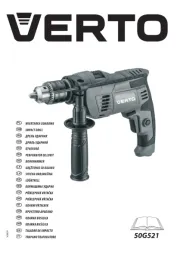
30 Juli 2025
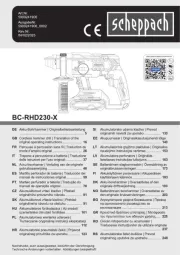
29 Juli 2025
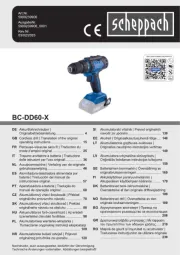
29 Juli 2025
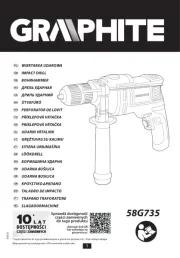
29 Juli 2025
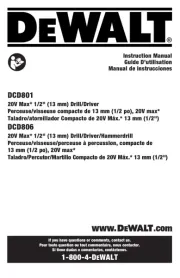
29 Juli 2025
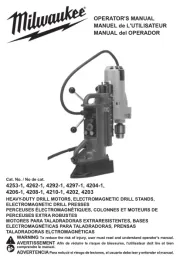
22 Juli 2025
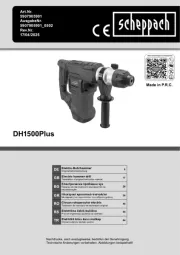
21 Juli 2025
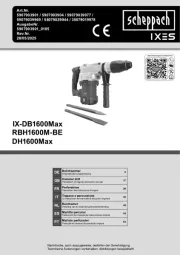
21 Juli 2025
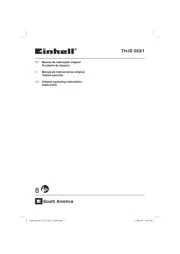
21 Juli 2025
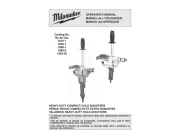
16 Juli 2025